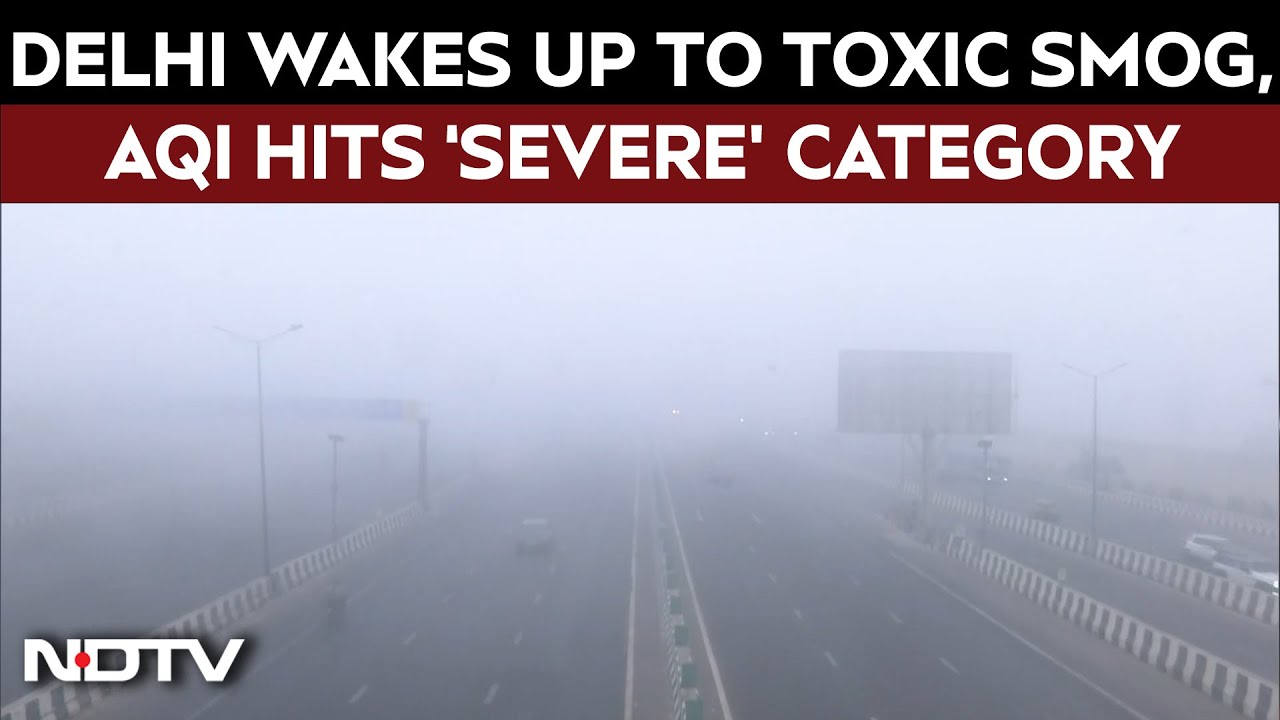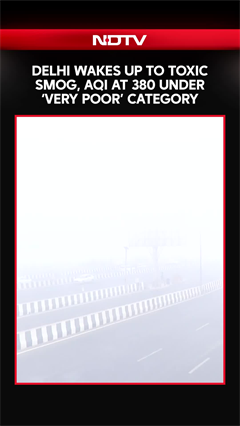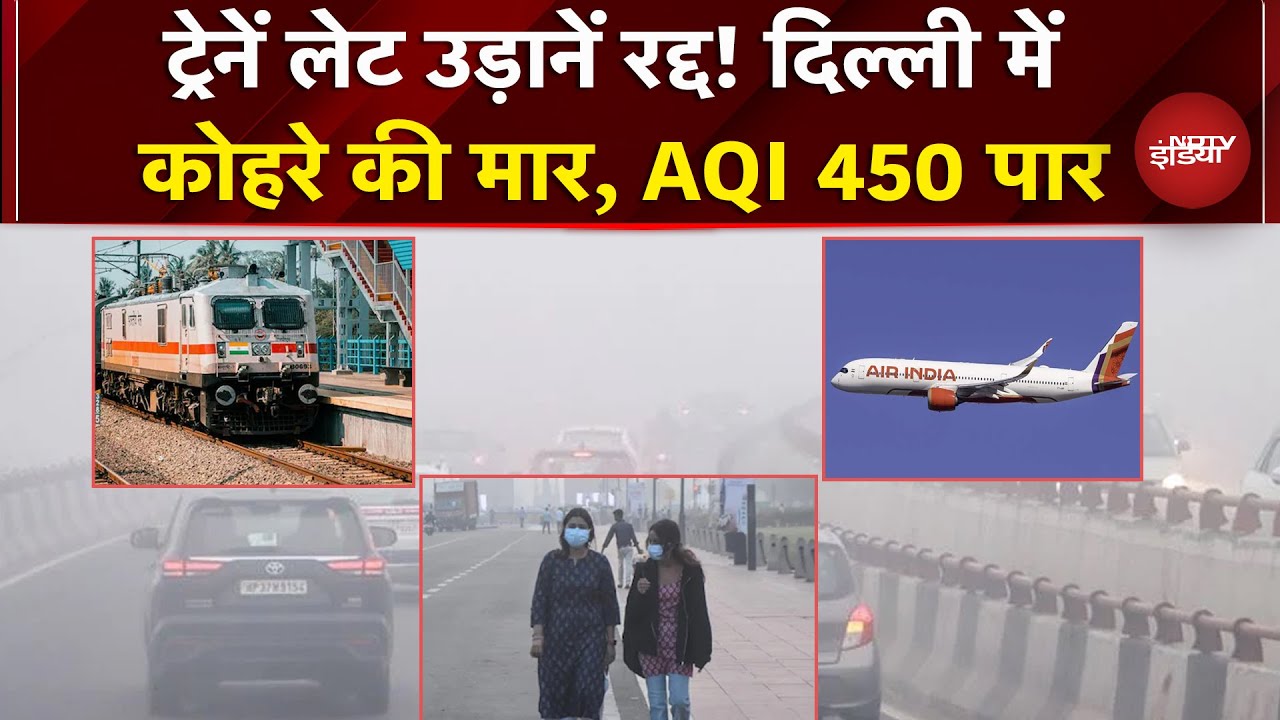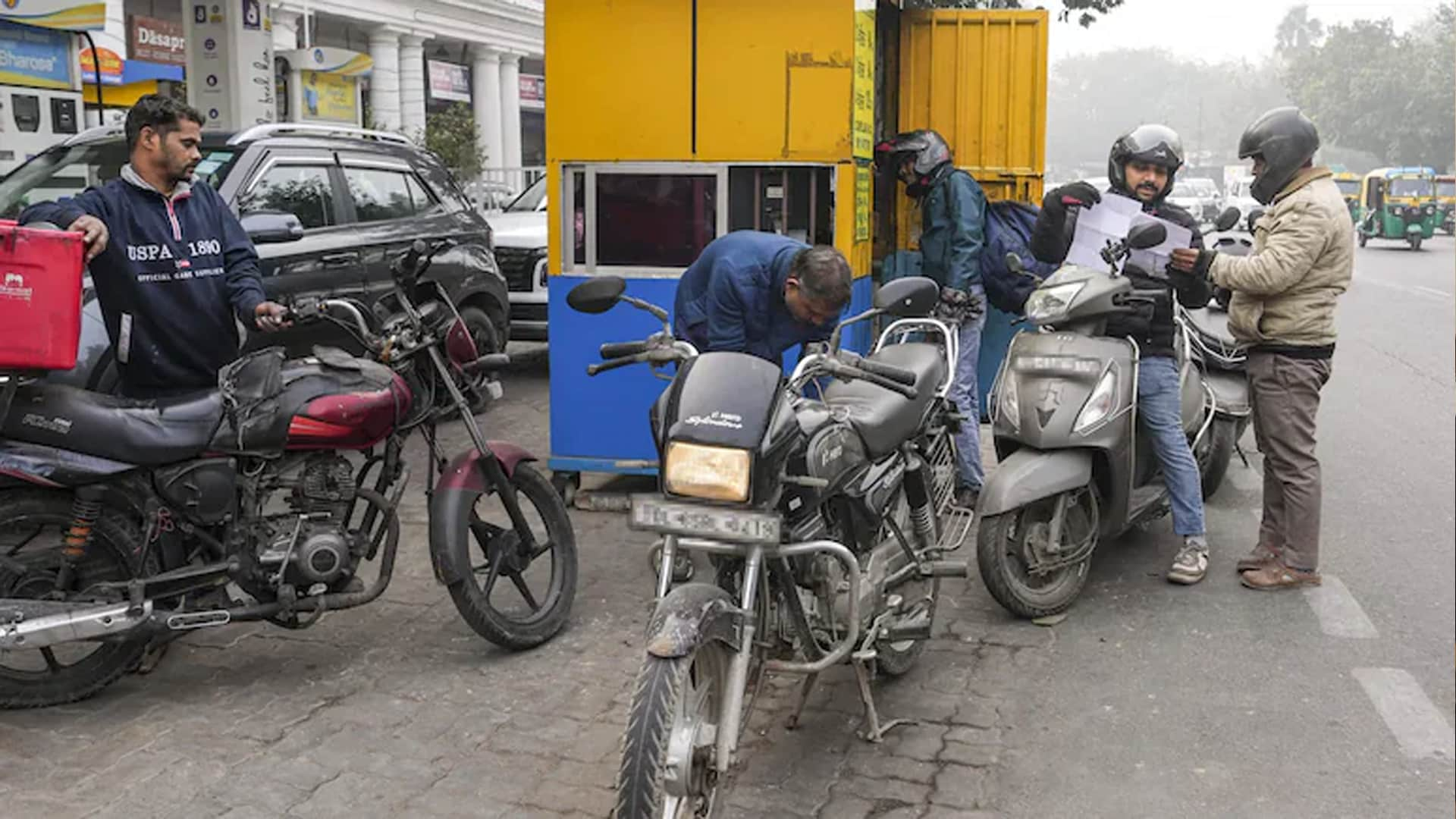- Home/
- Delhi Staggers Office Timings, Bans These Vehicles As AQI Remains "Severe"
Delhi Staggers Office Timings, Bans These Vehicles As AQI Remains "Severe"
Delhi continued to battle a worsening pollution crisis, with its air quality plunging into the 'severe' category for a fourth consecutive day. A dense smog has blanketed the city, with the Air Quality Index (AQI) recorded at 406 this morning, according to the Central Pollution Control Board (CPCB). The smog and pollution are causing severe health concerns, including respiratory distress, eye irritation, and heightened risks of cardiovascular complications.
Drone footage from Saturday morning at key locations such as AIIMS and Pragati Maidan shows a layer of smog still lingering in the air. At Pragati Maidan, the AQI stood at 357, a level classified as 'very poor.' Other hotspots, including Kalindi Kunj and India Gate, reported AQI levels of 414 and above, putting them in the 'severe' category.
Even high-rise buildings in areas like Kalindi Kunj appeared shrouded in a gray haze, while parts of the Yamuna river near Okhla Barrage were covered with toxic foam.
#WATCH | Delhi continues to be covered in a blanket of smog in the mornings as the Air Quality Index (AQI) continues to be in 'Severe' category in several areas as per the Central Pollution Control Board (CPCB)
— ANI (@ANI) November 16, 2024
(Drone visuals from Signature Bridge shot at 8:45 am) pic.twitter.com/q6uMZdQHhU
As toxic smog blankets India's capital, the Delhi government has implemented stringent measures to curb pollution under Stage III of the Graded Response Action Plan (GRAP).
The government has banned the operation of BS-III petrol and BS-IV diesel four-wheelers across the national capital. Violators will face penalties under Section 194(1) of the Motor Vehicle Act, 1988, which translates to a fine of Rs 20,000.
Additional vehicle-related restrictions include prohibition of diesel-operated Medium Goods Vehicles (MGVs) of BS-III standards or below within Delhi, unless transporting essential goods or services.
Restrictions have been implemented for diesel Light Commercial Vehicles (LCVs) registered outside Delhi, with exceptions for essential services. A ban has been imposed on interstate buses, except for those powered by electric, CNG, or BS-VI diesel engines, unless operating under an All India Tourist Permit.
Graded Response Action Plan (GRAP-III)
GRAP-III, enacted by the Commission for Air Quality Management (CAQM), brings a suite of interventions to combat severe pollution. These include:
Intensified road sweeping and water sprinkling, especially on heavy traffic corridors and pollution hotspots.
A complete ban on demolition, earth excavation, and transportation of construction waste.
Enhanced public transport services, including the deployment of 106 additional shuttle buses and increased metro train trips.
Staggered Office Timings
Delhi Chief Minister Atishi announced yesterday staggered timings for government offices in the city to ease traffic congestion given the pollution levels. Under the schedule, central government offices will operate from 9 am to 5:30 pm, Delhi government offices from 10 am to 6:30 pm, and the Municipal Corporation of Delhi (MCD) offices from 8:30 am to 5 pm.
Delhi LG VK Saxena issued a note approving the staggered government office timings till February 2025, expressing dissatisfaction that a measure that should have been in place as a pre-emptive step was implemented with a delay of several days.
Schools for children up to Class 5 will transition to online learning after the weekend. Private construction and demolition activities are suspended, while government projects deemed essential will continue. Transport department teams, with 280 personnel, have been deployed to enforce these measures.
also read
Thick Smog Blankets Delhi-NCR, Over 100 Flights Cancelled, 50 Trains Delayed
Edited by Aastha AhujaDelhi Government To Install Air Purifiers In 10,000 Classrooms As Pollution Soars
Reported by Ishika Verma, Edited by Amit ChaturvediBattle For Breath: Mumbai's Elite Enclave Turns Pollution Hotspot
Reported by Jitendra Dixit, Edited by Srishti Kapoor
Latest Stories
- Edited by Aastha Ahuja | Saturday December 20, 2025 , New Delhi
The national capital, Delhi, woke up to a thick layer of smog blanketing the city with the Air Quality Index (AQI) at 380, falling under the 'very poor' category.
- Reported by Ishika Verma, Edited by Amit Chaturvedi | Friday December 19, 2025
The government plans a phased rollout, funded through the environment cess, though exact installation timelines have not been announced.
- Reported by Jitendra Dixit, Edited by Srishti Kapoor | Friday December 19, 2025
Air quality in and around Bhakti Park and Wadala Truck Terminal (TT) has plummeted in recent weeks, with AQI levels soaring beyond 300 - classified as "severe".
- Edited by Astitva Raj | Friday December 19, 2025
His post quickly became popular among people who have experienced similar health and safety concerns while living in Delhi.
- Press Trust of India | Friday December 19, 2025 , New Delhi
Commuter awareness rises after Delhi's BS-VI and No PUC, No Fuel enforcement; fuel sales dip in border areas, PUC queues remain steady, says DPDA president.
................................ Advertisement ................................
Latest Videos
Opinion
Blog | Well Done, Delhi. You've Turned Lung Sacrifice Into A Badge Of HonourSaikat Kumar Bose
Monday November 10, 2025Till some years back, Delhiites would ask angry questions to those in power about the capitals annual tryst with toxic air. This has changed. Those in the driving seat dont see the need to answer now.
Opinion | Why Indians Have Just Given Up On Air Pollution CrisisTanushree Ganguly
Friday December 20, 2024While some may argue that people in Delhi are now more aware of air pollution than they were a decade back, my rebuttal would be that awareness does not mean that people are concerned.
Opinion | You Must Outrage Over Filthy Air More Than Once A YearJyoti Pande Lavakare
Tuesday December 10, 2024Delhi welcomed us with monsoon rains and mangos. We were home. Fast forward a couple of years, in the winter of 2012, I found myself in denial about something other parents, mostly expats, were calling toxic air.
Opinion | Delhi's Air Pollution Situation Is Like A Bad MarriageNishtha Gautam
Friday November 22, 2024On a good day, such as today, the AQI reading in Delhi is 407. We are jubilant at the sickly sunshine trickling through the slightly dissipated smog. At least its not 1600.
दिवाली... पराली... सियासी जुगाली!Ashwini kumar
Monday November 18, 2024दिल्ली-एनसीआर में प्रदूषण का समाधान तो आज तक मिला नहीं. हर साल चिंतित होकर हम-आप सांसों की तकलीफ के साथ-साथ दिल और ब्लड प्रेशर के मरीज भी क्यों बनें?


















